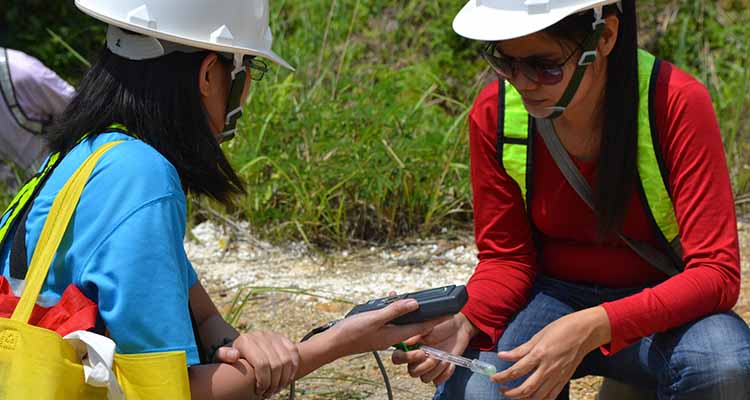
Copper and Arsenic Recovery as a Post-Mining Activity using Indigenous Plant Hyperaccumulators under the program: “Program for Rehabilitation and Restoration of Mining Areas Through Phytotechnologies” is a three-year research.
This project tries to understand the potential of hyperaccumulators in the remediation or rehabilitation of areas affected by mining and also their capability of absorbing metals in anomalous amounts. The physiology of hyperaccumulation should also be well understood.
There is a need to strike a balance between elements to enhance the phytoextraction of 1 metal over the other. There is also a need to identify more hyperaccumulators as 1 plant may not confer hyperaccumulation for all other metals. Improved understanding of this process would be very useful in phytoextraction and phytomining technologies. The initial phase of the proposed project is aimed towards the identification and propagation of plant hyperaccumulators for copper and arsenic recovery. The subsequent phases will be the development of a technology that can recover the copper and arsenic from the plant.
XU engages in this research project in collaboration with Ateneo de Manila University, University of the Philippines-Los Baños, Caraga State University and University of Melbourne, Australia through Dr. Augustine Doronila as part of the ridge to reef initiatives of the Research and Social Outreach cluster.
General Objective
Identification and propagation of Copper (Cu) and Arsenic (As) hyperaccumulators in large mines and in small scale mining areas for potential Cu and As metal recoveries.
Specific Objectives
- Assess the potential of different plant species for hyperaccumulation of copper and arsenic.
- Determine the biology of 3 to 4 plant hyperaccumulators in mined areas to understand fully their potential for hyperaccumulation. Physiological and cytological characterization will provide a better understanding of the hyperaccumulators.
- Facilitate the propagation of these plants: set up nurseries, transfer the propagated plant materials to experimental plots.
- Evaluate the feasibility of Cu and As and other associated metals) extraction / recovery from the plants.
- Facilitate phytoremediation studies: land stability and minimizing soil erosion, enhance succession and biodiversity in the area.
Significance of the Project
Owing to the mineral wealth of the Philippines, mining has been one of the main sources of livelihood in different areas across the country dating back to pre-Hispanic occupation. At present, the country is one of the major exporters of copper, gold and nickel.
Similar to any other industry, a set of governing rules and regulations are being implemented to ensure that proper operations are being done. In some cases, problems regarding compliance arise, causing undesirable impacts to different sectors, such as the environment. As a result, efforts to provide solutions to such dilemmas are being worked on by concerned institutions.
Phytoremediation has been identified as a feasible environmental approach to restore or improve ecologically degraded land forms which resulted from poor mining practices.
The presence of high amounts of metals in the soil is generally detrimental to most plants. The Mineral Recovery Research team is in search of plants that can survive in these areas and take up high amounts of Cu and As from metal-rich soils to their biomass. These plants will be used in the rehabilitation of mined-out areas, followed by the recovery of Cu and As.
The team has identified a total of 7 potential hyperaccumulators of Cu and As (3 flowering plants, 4 ferns) which are currently being mass-propagated in the nursery in Cagayan de Oro for further experimental studies.
